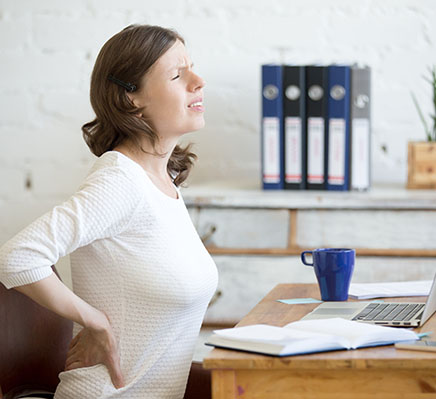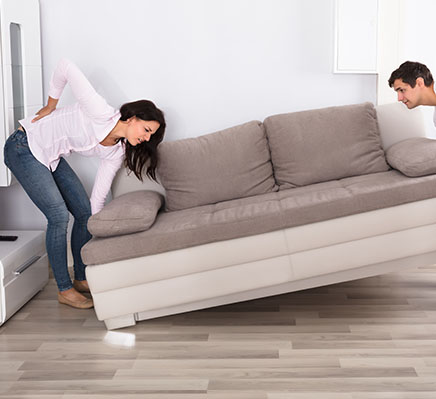Up to 80% of Australians will experience a significant episode of back pain at some stage in their lives, with a number of these going on to suffer recurrent pain and functional limitations due to their injury. As physiotherapists we are trained to properly assess and treat spinal pain, including headaches, utilising techniques such as:
- Advice on appropriate activities to promote early movement
- Massage
- Mobilisation / manipulation
- Stretches
- Postural advice
- Core stabilisation exercises, e.g. Swiss ball exercises, Pilates
- General strengthening and fitness exercises

Our aim as physiotherapists is to educate you on your injury, perform the necessary “hands-on” techniques to expedite your recovery and formulate an appropriate home exercise program for both the short and long term management of your injury.
There are a number of different structures that can be injured when it comes to spinal pain. These include:
Facet joint: these are the small joints in our spine that control the direction of movement at each specific level of our spine. Just like our knee or ankle, these joints can be stiff (hypomobile), loose (hypermobile) or be injured if taken beyond their natural limit and pain can result. These joints are also susceptible to all forms of arthritis, e.g.”wear and tear” arthritis (osteoarthritis) and inflammatory arthritis (rheumatoid arthritis).
Discs: these are our spines cushioning system and consist of a cartilage outer rim, with a gel-like substance in the middle. Through sudden or repetitive trauma this gel can start pushing through the outer wall of the disc (bulge) or even rupture the outer wall (prolapse).
Nerves: these are our message pathways and branch off our spinal cord to exit at every level of our spine. If the nerve becomes impeded while escaping the spine, e.g. disc bulge or bony spur, it can become inflamed and pain can felt anywhere down the distribution of that nerve. The term “sciatica” is a diagnosis given to pain that is felt anywhere down the distribution of the sciatic nerve.
Muscles: these provide our spine with movement, but equally important they provide our spine with stability. Acute muscle “strains” are less frequent in the spine, however muscles will often tighten or “spasm” as a protective mechanism in response to injury, which can result in muscle fatigue and soreness.
Spinal Pain at the Office:
With a growing number of our workforce performing sedentary roles, one common reason for spinal pain is the postural stresses we place on our spines everyday.
Ways to reduce these postural stresses in the office include:
- Making sure your chair is properly adjusted to suit your back
- Making sure your workstation set-up conforms to WorkCover guidelines
- Break-up your sitting every 30 minutes
- Use a lumbar roll to further support your spines natural curves.
For a detailed resource on OH&S in an office environment please visit: Health & Safety in the Office

Spinal Pain with Lifting:
Another common cause of back pain is lifting and it is important to recognise and practice safe manual handling principles to minimise your risk of injury. Assuming you have cleared the area of any trip hazards or clutter, when preparing to perform a lift there are five easy principles to consider:
- Stance: make sure your feet are positioned at least hip width apart so you are balanced throughout the lift, especially if the object you are holding happens to unexpectedly move.
- Posture: throughout the lift you should attempt to keep your spine in a “neutral” position, i.e. maintain the natural curves that exist in your spine when you’re standing upright.
- Leverage: make sure the object you’re lifting is kept as close to your body as possible
- Torque: ensure you are facing the object you’re lifting. Do not lift in a twisted position or twist as you lift, this will increase the strain on your spine and significantly increase your risk of injury.
- Speed: ensure you lift with a controlled movement. If you have to use fast, uncontrolled movement to lift the object it is probably too heavy for you and you should seek assistance.
For a detailed resource in manual handling and strategies to reduce the risk of injury, please visit: Manual Handling Resource


